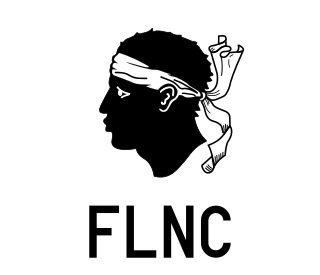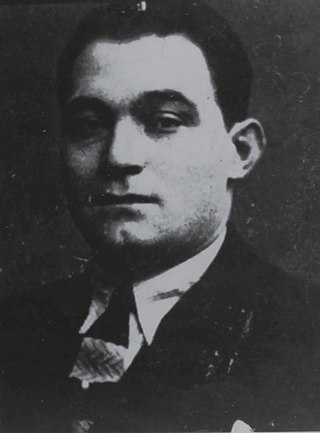The Havana Conference of 1946 was a historic meeting of United States Mafia and Cosa Nostra leaders in Havana, Cuba. Supposedly arranged by Charles "Lucky" Luciano, the conference was held to discuss important mob policies, rules, and business interests. The Havana Conference was attended by delegations representing crime families throughout the United States. The conference was held during the week of December 22, 1946, at the Hotel Nacional. The Havana Conference is considered to have been the most important mob summit since the Atlantic City Conference of 1929. Decisions made in Havana resonated throughout US crime families during the ensuing decades.

The National Liberation Front of Corsica is a name used by many militant groups that advocate an independent state on the island of Corsica, separate from France. The organisations are primarily present in Corsica and less so on the French mainland. A Conculta Naziunalista was often considered to be the political wing of the original organisation.
Armata Corsa was an underground separatist terrorist organization in Corsica, founded in 1999 and disbanded around 2001.

Michele Zaza was a member of the Camorra criminal organisation who was also initiated in the Sicilian Mafia. He headed the Zaza clan in Naples. Zaza was known as ’O Pazzo due to his outspoken and implausible public statements. He was one of the first Camorristi to emerge as a powerful organiser of the cigarette contraband industry in the 1960s and 1970s.
Albanian mafia or Albanian organized crime are the general terms used for criminal organizations based in Albania or composed of ethnic Albanians. Albanian organized crime is active in Europe, North America, South America, and various other parts of the world including the Middle East and Asia. The Albanian Mafia participates in a diverse range of criminal enterprises including trafficking in drugs, arms, and humans. Thanks to their close ties with the Serbian mafia and 'Ndrangheta of Calabria, they control a large part of the billion dollar wholesale cocaine market in Europe and appear to be the primary distributors of cocaine in various European drug hubs including London. Albanian organized crime is characterized by diversified criminal enterprises which, in their complexity, demonstrate a very high criminal capacity. In Albania, there are over 15 mafia families that control organized crime.
A series of meetings between Sicilian Mafia and American Mafia members were allegedly held at the Grand Hotel et des Palmes in Palermo, Sicily, between October 12–16, 1957. Also called the 1957 Palermo Mafia summit, the summit discussed the international illegal heroin trade in the French Connection. The FBI believed it was this meeting that established the Bonanno crime family in the heroin trade.
The French Connection was a scheme through which heroin was smuggled from Indochina through Turkey to France and then to the United States and Canada. The operation started in the 1930s, reached its peak in the 1960s, and was dismantled in the 1970s. It was responsible for providing the vast majority of the heroin used in the United States at the time. The operation was headed by Corsicans Antoine Guérini and Paul Carbone. It also involved Auguste Ricord, Paul Mondoloni and Salvatore Greco.
Organised crime in Nigeria includes activities by fraudsters, bandits, drug traffickers and racketeers, which have spread across Western Africa. Nigerian criminal gangs rose to prominence in the 1980s, owing much to the globalisation of the world's economies and the high level of lawlessness and corruption in the country.

François "Lydro" Spirito was a French gangster. He was one of the leaders of the French Connection, and inspired the film Borsalino, which featured Alain Delon and Jean-Paul Belmondo.

Paul Bonnaventure Carbone was a Corsican criminal involved in the Marseille underworld from the 1920s until his death in 1943. He was known as the Emperor of Marseille. Associated with François Spirito, who would become one of the leaders of the French Connection, Carbone inspired the film Borsalino which featured Alain Delon and Jean-Paul Belmondo.

Simon Pierre Sabiani was a French businessman and politician. He served as a member of the Chamber of Deputies from 1928 to 1936.
The Unione Corse is a term designating the Corsican organized crime as a whole during the period 1930s–1970s, in the context of the French Connection, an international heroin trade network operated at that time between Turkey, Southern France, and the United States. A 1972 Time article described the "Unione Corse" as a Corsican-based unified and secretive crime syndicate akin to the American Five Families. The local situation in Southern France during this period was in reality more complex, with a nebula of mainly Corsican and Italian-French clans cooperating or fighting each other according to the circumstances and opportunities. If they constituted a key element of the wider French Connection, flooding the American market with Marseille-produced heroin from the 1950s to early 1970s, those clans remained overshadowed by the much more powerful Italian-American Mafia.
Marcel Francisci was a French politician and an alleged member of the Unione Corse who was accused of masterminding the French Connection drug network. As a young man, Francisci fought in World War II and was awarded the Croix de Guerre. Following the war, he developed a business empire that included casinos in Britain, France and Lebanon. Francisci served in the general council of the Corse-du-Sud (UDR) and was a member of the Civic Action Service (SAC), a Gaullist militia. He was assassinated in Paris in 1982.
The gang de la Brise de Mer was one of the most powerful Corsican criminal organizations. Based in Northern Corsica, the gang controls various activities in Corsica, but also in the South of France, in Paris, in Italy, in Occidental African countries, and in Latin American countries.
The Hornec brothers gang, also called "the H" or "the Montreuil gang", is a Gitanes criminal group from the region of Paris. It is the most influential gang in the French capital. They control many criminal activities in the Parisian region, and they have also good connections with the Corsican mafia, and the Maghrebian gangs.
Organized crime in France is primarily based in major cities like Marseille, Grenoble, Paris, and Lyon. It is often referred to as grand banditisme in France.
The Azerbaijani mafia is a general term for organized criminal gangs that consist of ethnic Azerbaijanis. In Russia, they are mostly based in Moscow and other major Russian cities like Saint Petersburg. Outside of Russia, they are active in most former Soviet states, Turkey, the Netherlands, Germany and other European countries.
Lebanese mafia is a colloquial term for organised crime groups which originate from Lebanon. Lebanese organised crime is active in the country of Lebanon itself, as well as in countries and areas with a large Lebanese community, most notably Australia, Germany and Canada, and also in the Triple Frontier in South America. Lebanese organised crime syndicates generally are active globally, largely due to the mass Lebanese population. For the past decades the Lebanese crime families had controlled 7,8% of Germany's underworld activities.
Jacques Follorou is a French journalist for Le Monde. He is the author of several books, including three about organized crime in Corsica.
The Petit Bar Gang is an organized crime group from Corsica. It gets its name from the "Petit Bar," an establishment in Ajaccio, owned by Ange-Marie Michelosi, a lieutenant of Jean-Jérôme Colonna, from whose gang it is said to originate.




